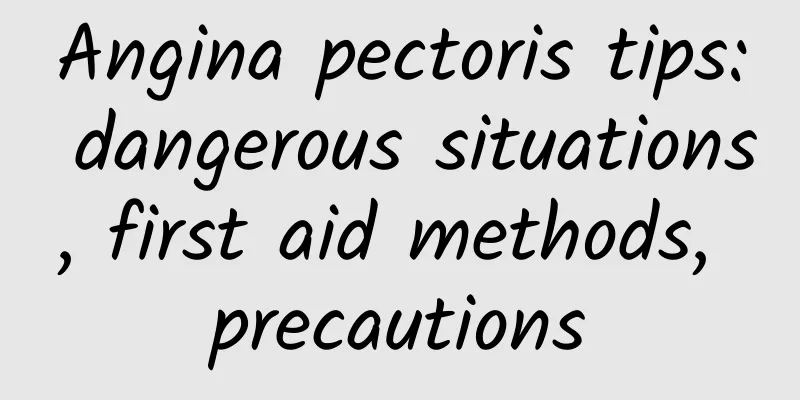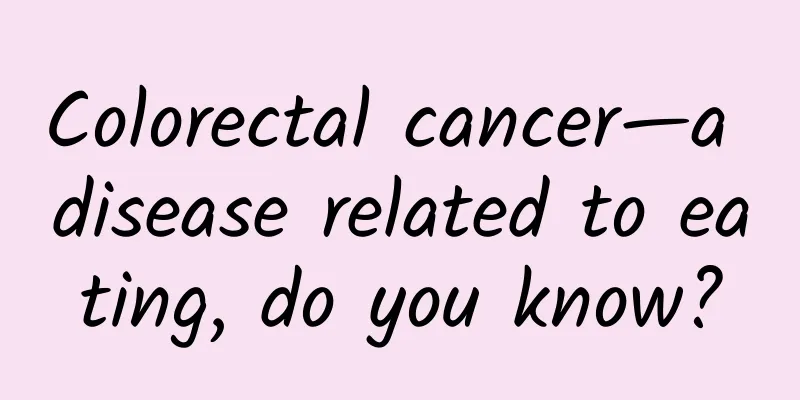Angina pectoris tips: dangerous situations, first aid methods, precautions

|
Author: Zhang Haicheng, Chief Physician, Peking University People's Hospital Reviewer: Wang Fang, Chief Physician, Beijing Hospital As we all know, angina pectoris is a serious chest pain emergency that requires immediate treatment. If the condition is delayed, it can cause acute myocardial infarction or even sudden death. For angina pectoris patients and their families, in addition to following the doctor's advice, it is crucial to learn more about common sense issues about angina pectoris. What patients and their families like to ask most is: What kind of angina is the most dangerous? What should we pay special attention to during an acute attack of angina? What should patients with angina pay attention to in their daily life and diet? Let's learn about it together. 1. What kind of angina pectoris is the most dangerous? Medically, angina pectoris is divided into two types: stable angina pectoris and unstable angina pectoris. Stable angina, as the name implies, means that the cause, location, nature, duration, and relief of chest pain are relatively stable. For example, it will only occur when a certain amount of activity is reached, and it will not occur if this amount of activity is not reached. Moreover, when the chest pain occurs, the location and nature of the chest pain are similar, and the duration is often a few minutes, generally not more than 15-20 minutes. After stopping the activity or taking nitroglycerin sublingually for a few minutes, the chest pain will be relieved quickly. For example, some people say that they often have chest pain when they climb to the third floor continuously, and it will get better quickly when they stop, and it will not occur when they climb to the second floor. Unstable angina means that the triggering factors, nature, location, duration, and relief methods of chest pain are unstable. For example, chest pain used to occur when climbing three floors, but now it occurs when climbing the second or even the first floor, or the pain lasts longer than before, or the nature of the chest pain is more severe than before, or stopping or even taking sublingual medication does not relieve the pain as quickly as before, or chest pain may occur when doing nothing or even sleeping at night. Why is it unstable? It is mainly because of the sudden change in the blood supply to the myocardium, which leads to the aggravation of myocardial ischemia and hypoxia, thus causing the above-mentioned unstable symptoms. For example, when the plaques in the coronary arteries are unstable, the plaques erode, rupture, and form blood clots locally, resulting in aggravated vascular stenosis; or coronary artery spasms occur, causing the blood vessels to temporarily narrow and the blood volume to decrease, and even spasms can occur in blood vessels without stenosis (cold stimulation, smoking, emotions, etc. can induce spasms); or in some cases, the heart's demand for oxygen increases significantly, such as strenuous activities, emotional excitement, and after a full meal; or coronary artery lesions gradually worsen over time, and when they reach a certain level, even slight activities or emotional fluctuations can induce angina pectoris; or in cases of anemia, infection, hypotension, hyperthyroidism, etc., unstable angina pectoris can also occur. Generally speaking, stable angina pectoris rarely leads to acute myocardial infarction or death, while unstable angina pectoris, even if the attacks are rare, can easily lead to acute myocardial infarction or sudden death. Figure 1 Original copyright image, no permission to reprint Medically, these two types of angina pectoris are clearly distinguished to make everyone aware that unstable angina pectoris requires prompt hospitalization and medication or even coronary intervention surgery to open the blood vessels; while stable angina pectoris is not so urgent and when an attack occurs, you can just stop and rest or take nitroglycerin sublingually to relieve it. Follow the doctor's advice to adjust your lifestyle, take the medicines regularly, control your blood pressure, blood sugar, blood lipids, and pulse, and try to delay the further enlargement of the narrowed coronary artery plaques. Of course, in clinical practice, doctors will have many other classifications for unstable angina, but for ordinary patients, there is no need to know so much. We need to know which one is stable and which one is unstable. Instability is dangerous. When the induction mode, nature, duration, and relief mode of angina pectoris indicate that it is getting worse, or angina pectoris occurs even at rest, this situation cannot be relieved by sublingual nitroglycerin alone. Go to the hospital for further diagnosis and treatment as soon as possible. This is enough. 2. What should you pay special attention to during an acute attack of angina pectoris? When angina pectoris attacks, the first thing to pay special attention to is to stay calm. Don't get nervous when you feel pain, as nervousness will aggravate angina pectoris. If angina pectoris is caused by physical activity or emotional fluctuations, you need to stop the activity and control your emotions. Generally speaking, it will naturally ease in a few minutes. If you have nitroglycerin with you, you can also take one pill sublingually. If you don't have nitroglycerin, you can also take 5-10 pills of Quick-Acting Heart-Saving Pills sublingually. For some people (especially those who are nervous), taking Quick-Acting Heart-Saving Pills is even better than taking nitroglycerin. Taking nitroglycerin sublingually will cause headaches in a few people. This is an adverse reaction caused by nitroglycerin dilating cerebral blood vessels. These people can take Quick-Acting Heart-Saving Pills sublingually when angina pectoris attacks in the future. People with coronary heart disease are recommended to always have these emergency medicines with them. It is especially important to note that the spare nitroglycerin should be replaced regularly and the shelf life should be noted. If it is not replaced in time, it may not work when used during an illness, and only have side effects. Therefore, you must pay attention to the date and replace it in time. In addition, when angina pectoris occurs, nitroglycerin should not be taken with water, but should be held sublingually. It will be absorbed faster when placed under the tongue and directly absorbed into the blood through the sublingual vein, where it can take effect faster. Figure 2 Original copyright image, no permission to reprint If the pain does not ease within 3-5 minutes, you can take another tablet. If the pain still does not ease after taking the second tablet of nitroglycerin, you must go to the hospital as soon as possible. This is because it is possible that this is not angina pectoris, but acute myocardial infarction. During myocardial infarction, the blood vessels have been completely blocked by blood clots, and nitroglycerin cannot provide relief. Of course, some people suffer from severe angina attacks. They are completely unable to walk or even pick up a phone. In this case, they need help from others to rescue them. 3. What should patients with angina pectoris pay attention to in daily life? For patients with angina pectoris, there are several details to pay attention to: First, when you get up in the morning, especially in winter when it is very cold, do not go out suddenly. If you have to go out, slowly adapt from indoors to outdoors. If you go out suddenly and walk on the road, the stimulation of cold air can easily induce angina pectoris. Second, do not lock the door when going to the toilet or taking a shower at home. Otherwise, once angina pectoris occurs, people outside cannot get in, which will delay the time for treatment. It would be better if the toilet and bathroom have emergency alarm buttons installed. Third, limit salt intake. The main purpose of salt restriction is to control blood pressure. Most patients with coronary heart disease have a history of hypertension, and hypertension is closely related to a high-salt diet, so salt intake must be properly controlled. Salt restriction should attract the attention of the entire society. The World Health Organization recommends that healthy people should not eat more than 5g of salt per day, which is equivalent to the amount of a beer bottle cap. However, many foods in my country's cuisine are very high in salt, so special attention should be paid. Fourth, limit sugar. The purpose of limiting sugar is to control blood sugar. Many patients with coronary heart disease are accompanied by diabetes, so it is crucial to appropriately limit the intake of carbohydrates, and fruits cannot be eaten freely. Fifth, fat restriction. The purpose of fat restriction is to control blood lipids. Once diagnosed with coronary heart disease, statins should be taken for life to keep low-density lipoprotein cholesterol (LDL) at a lower level, delay the growth of plaques, and stabilize existing plaques. Maintaining normal triglyceride levels is also important. Try to eat less high-fat and high-sugar foods and control total calorie intake. Sixth, quit smoking. Smoking is one of the risk factors for coronary heart disease, and smoking can also induce coronary artery spasm and lead to unstable angina. Therefore, quitting smoking is very important for patients with coronary heart disease. Seventh, reduce stress. Excessive stress and stress can also cause unstable angina. Maintaining mental health and learning to reduce stress are also compulsory lessons for patients with coronary heart disease. Eighth, exercise. Patients with coronary heart disease should carry out rehabilitation exercises under the guidance of doctors, starting with aerobic exercise with a small amount of exercise and a low heart rate, and gradually progressing. This is very helpful for the formation of collateral circulation, improving cardiopulmonary function, and reducing angina attacks. |
<<: How is hypertrophic cardiomyopathy diagnosed? What are the signs on ultrasound?
>>: How to treat angina pectoris? What are the commonly used drugs?
Recommend
Anemia range table for pregnant women
When women enter pregnancy, the changes in body h...
It’s okay for children to skip breakfast, is it healthier to go hungry?
Fact: This statement is incorrect. Children skipp...
At what age can a baby be held in the bladder? Why can't the baby be held in the bladder too early?
When many babies are just born, their parents hol...
Can a blood test detect an ectopic pregnancy?
Generally, if a woman's period has not come y...
Kuntai Capsule for the Treatment of Polycystic Ovarian
Polycystic ovary syndrome is a disease with compl...
The best age for women to practice yoga
Yoga is a relatively static exercise that has man...
What should female friends do if they have cold body and weak qi?
When the cold winter comes, many female friends w...
What are the symptoms of poor gallbladder function in women?
The gallbladder is a very important organ that ha...
How to make your breasts smaller
The chest holds the most fat, so measures to redu...
Ten ways to get pregnant quickly and easily
Here are ten ways to get pregnant quickly and eas...
What is the reason for the hardness in the breast
As a woman, you should pay attention to the hardn...
What causes nipple pain in women?
There are always female friends who say that thei...
“Health from Eating” Series | There are many kinds of dark vegetables, how to eat them more healthily?
Leafy vegetables are the main source of calcium, ...
Can I keep the baby if I get pregnant again three months after an abortion?
It is better to wait at least half a year after a...
What causes women to be unable to hold their urine?
Female friends may be busy with work at ordinary ...









